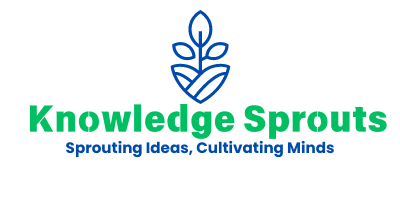Book Appointment Now

Note Taking Methods for Revision: Boost Your Study Skills Today
Struggling to remember what you studied? Here’s a bit of interesting news: effective note-taking can drastically improve your revision. This article will guide you through different note taking methods for revision like the Cornell, mapping, and outline techniques to help find which works best for you.
Prepare to boost your study skills!
Key Takeaways
- Use the Outline Method to break down complex topics into manageable chunks. It helps you see the main points and details easily.
- Try the Cornell Method by dividing your page for notes, questions, and summaries. This is great for quick reviews and understanding important concepts.
- The Mapping Method turns your notes into a visual map, linking ideas together. It’s ideal for visual learners who like seeing how things connect.
- Choose a note-taking method that fits your learning style and what you’re studying. Visual learners might prefer mapping while detailed writers could enjoy outlining or the Cornell method.
- Experiment with different methods to find what boosts your revision and study skills the most. Whether it’s flashcards or mind maps, finding the right fit can help raise your grades.
Overview of Note Taking Methods for Revision
Finding the perfect way to jot down information can make revising a lot easier. From structured outlines to visual maps, explore different strategies to see what clicks with your study habits.
The Outline Method
The Outline Method is a structured note-taking technique that helps students organize their study material in a clear, hierarchical way. Start with the main topics as headings at the top of your page.
Then, break these down into subheadings and bullet points for detailed facts or ideas. This method makes use of indentations to show different levels of information, helping you see the main points and supporting details at a glance.
Using this approach turns chaos into order, especially during lectures or while reading complex texts. It’s ideal for subjects like Biology where understanding the hierarchy and relationships between concepts is key.
Many students find they can recall information better when it’s organized hierarchically. They create outlines on loose-leaf paper or notebooks, often highlighting main points in one color and details in another to visually separate them.
This technique aids in revising and sharpens critical thinking by forcing note-takers to condense large pieces of information into concise, logical structures.
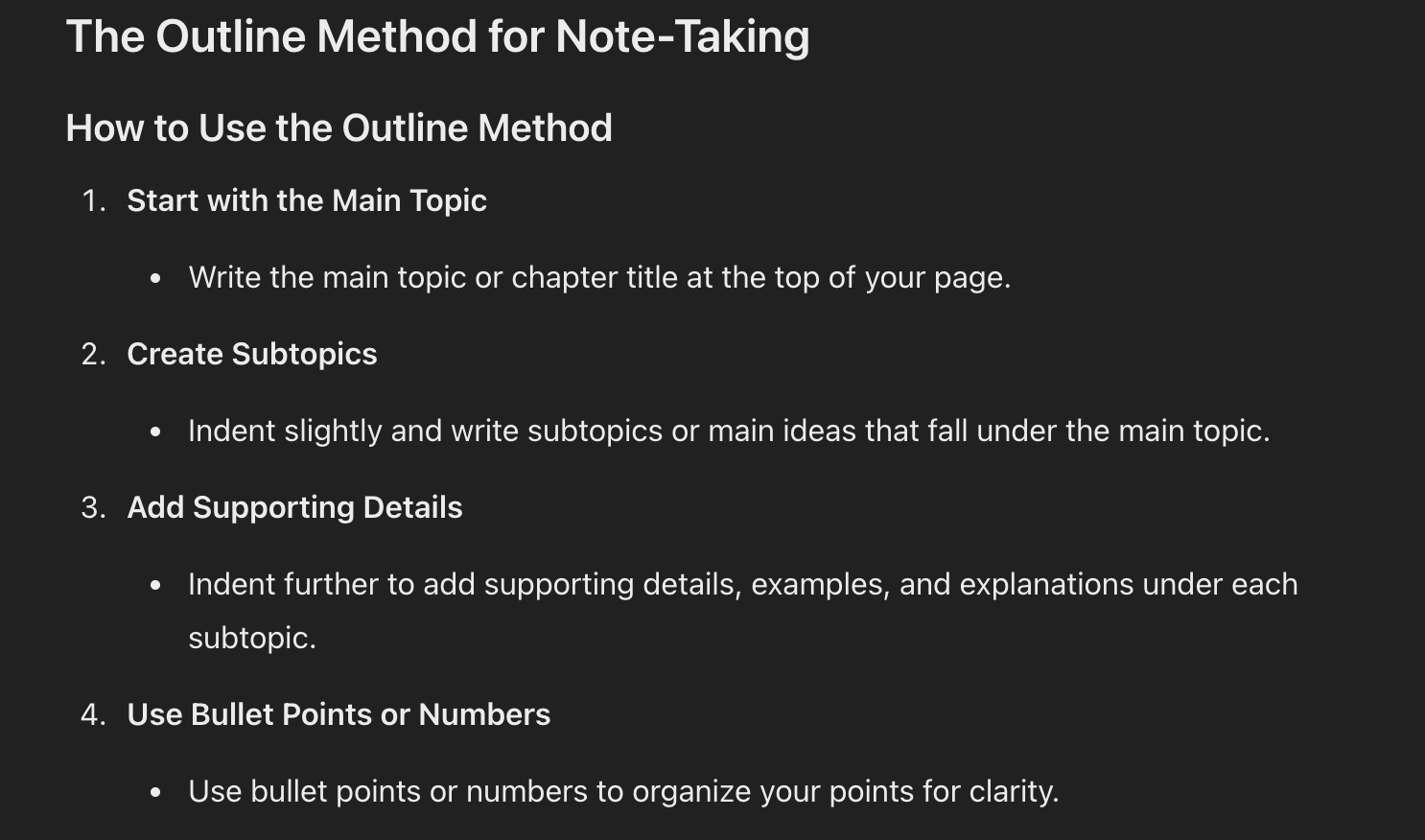
The Cornell Method
The Cornell Method is a smart way to organize your study notes. Walter Pauk, an education professor, created it in the 1940s at Cornell University. This method splits your page into three sections: a narrow column on the left, a larger area on the right, and a space at the bottom.
You write key points or questions in the left column and add detailed notes in the main section on the right. At every lesson’s end, you jot down a summary at the bottom of each page.
Using this system helps you quickly review for tests by covering up parts of your notes to quiz yourself with questions from the left column. It makes sure you understand important concepts without getting lost in too much detail.
Plus, this approach is great for writing summaries that reinforce learning and help jog memory later on. Using headings like “Cornell Notes” or “summary” keeps everything organized so when revision time comes around, finding what you’re looking for takes no time at all.
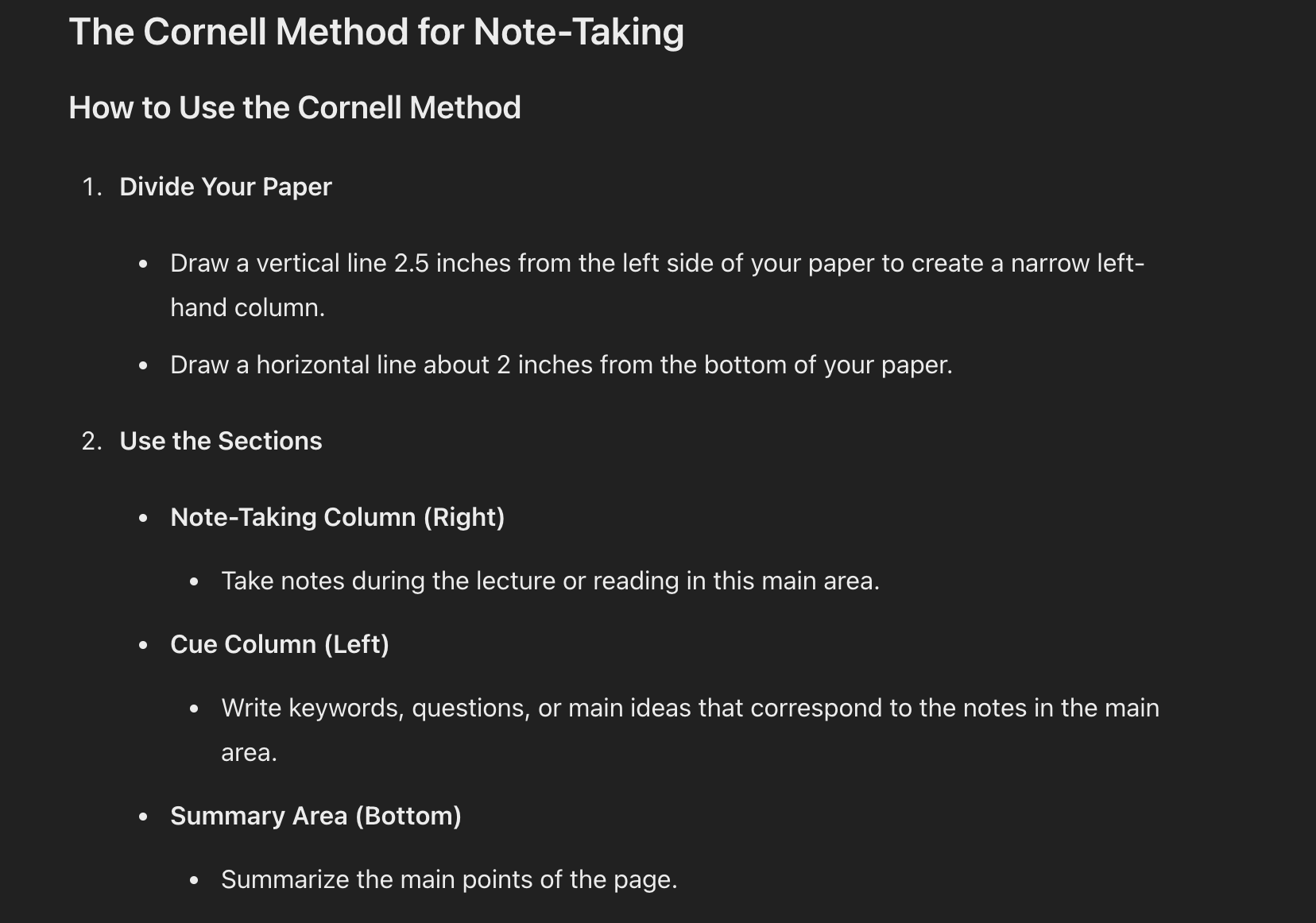
The Mapping Method
The Mapping Method turns your notes into a visual display. It uses circles, lines, and boxes to link ideas together. This method is perfect for people who think in pictures. You start with a main topic in the center of your page.
Then, draw branches out for different ideas or subtopics related to it. For each new thought or detail, you add smaller branches. This way, your notes look like a map or web.
Tools like colored pens and highlighters can make your mind map even clearer. Using different colors helps you see the connections between topics at a glance. Mind maps are great for organizing lots of information without feeling overwhelmed.
They help you see how everything fits together so you can remember better when revising for exams or working on projects.
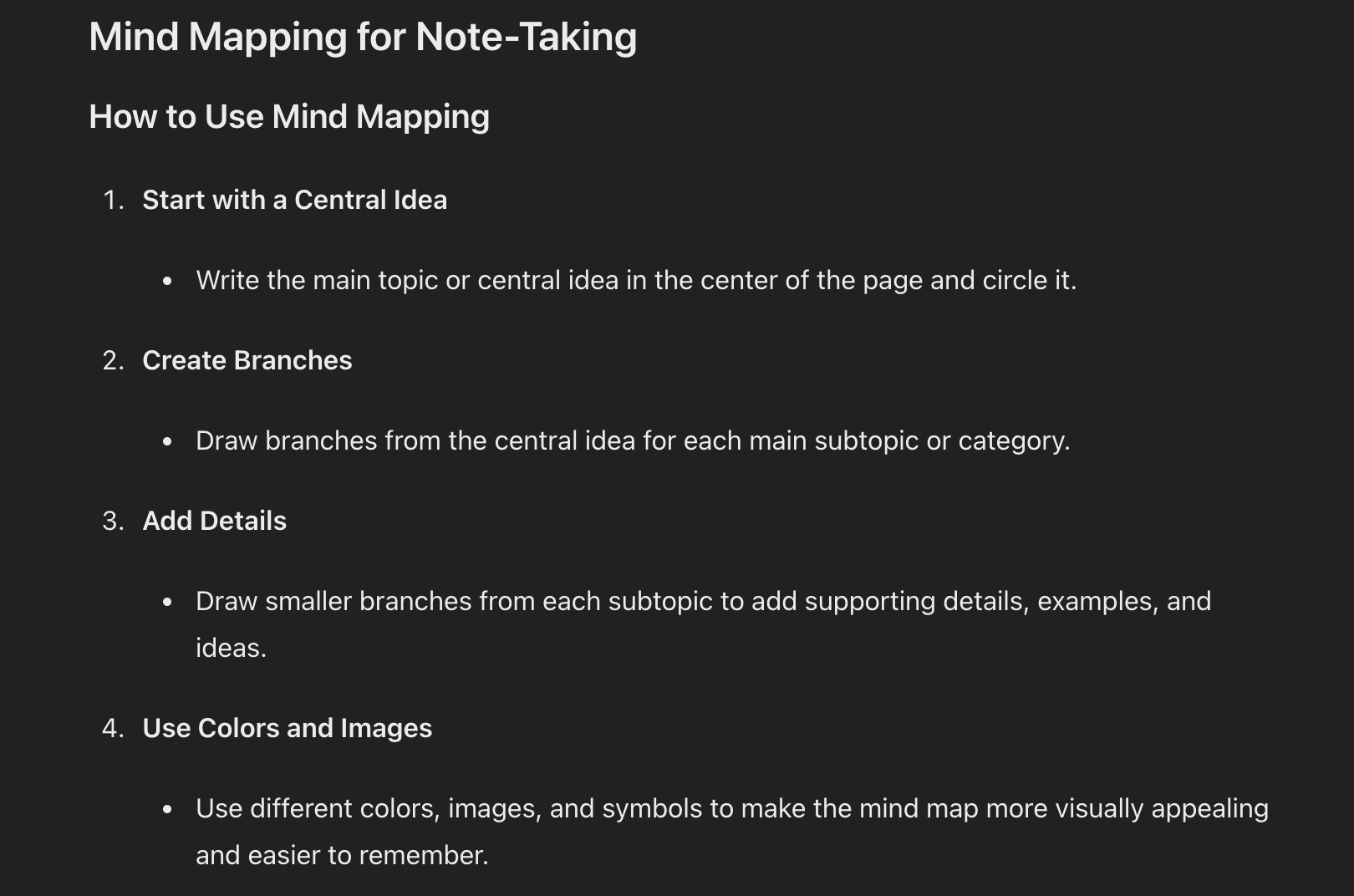
Detailed Analysis of Each Method
We dig deep into each note-taking strategy, showing you how to use them best. From organizing your thoughts with the Outline Technique to dividing your page using the Cornell System, and visually connecting ideas through Mapping—each method has something unique to offer.
You’ll learn how to structure information in a way that makes sense, how important it is to divide your notes for an efficient review later, and how visualizing concepts can clear up complex topics.
Whether you prefer pen and paper or digital devices, these methods can adapt to fit your style. Get ready for detailed tips on making revision notes that really work!
The Outline Method: Structuring Information Hierarchically
The Outline Method helps you organize information in a clear, hierarchical way. You start with broad main ideas at the top and add smaller, detailed points under each. Think of it as building a tree, where the trunk is your main topic and the branches are subtopics that spread out from it.
This method is ideal for breaking down complex topics into manageable chunks. It’s great for lectures or meetings where structure is important. With headings and bullet points, you create a visual guide that makes revisiting your notes for revision much simpler.
Using this method means making comprehensive notes that capture everything without missing key concepts. Each main idea gets its own section in your notes, marked by Roman numerals or letters to show levels of importance.
Under these markers, you list relevant details or thoughts as bullet points or indented lines. This setup not only aids in taking effective revision notes but also enhances knowledge retention by mapping out connections between facts and ideas visually on paper or digitally through note-taking apps like Google Drive or specialized note-taking systems like Zettelkasten.

The Cornell Method: Dividing the Page for Efficient Review
The Cornell Method makes note-taking simple and effective. You split your page into three sections: a narrow margin on the left, a wide area for notes on the right, and a summary space at the bottom.
In the left column, jot down key prompts or headings related to your lecture content or reading material. This setup encourages active listening and learning since you’ll need to identify the main ideas as they happen.
Write a summary in your own words at the end of each page to capture the essence of what you’ve learned.
This method shines during review time. Looking over the left column provides a quick overview of topics covered, making it easier to recall without rereading all details. Condensing information into summaries helps in reinforcing knowledge and preparing for exams efficiently.
Moving forward, understanding how this system aids retention will lead us naturally to explore another practical approach – The Mapping Method: Visual Organization of Concepts.
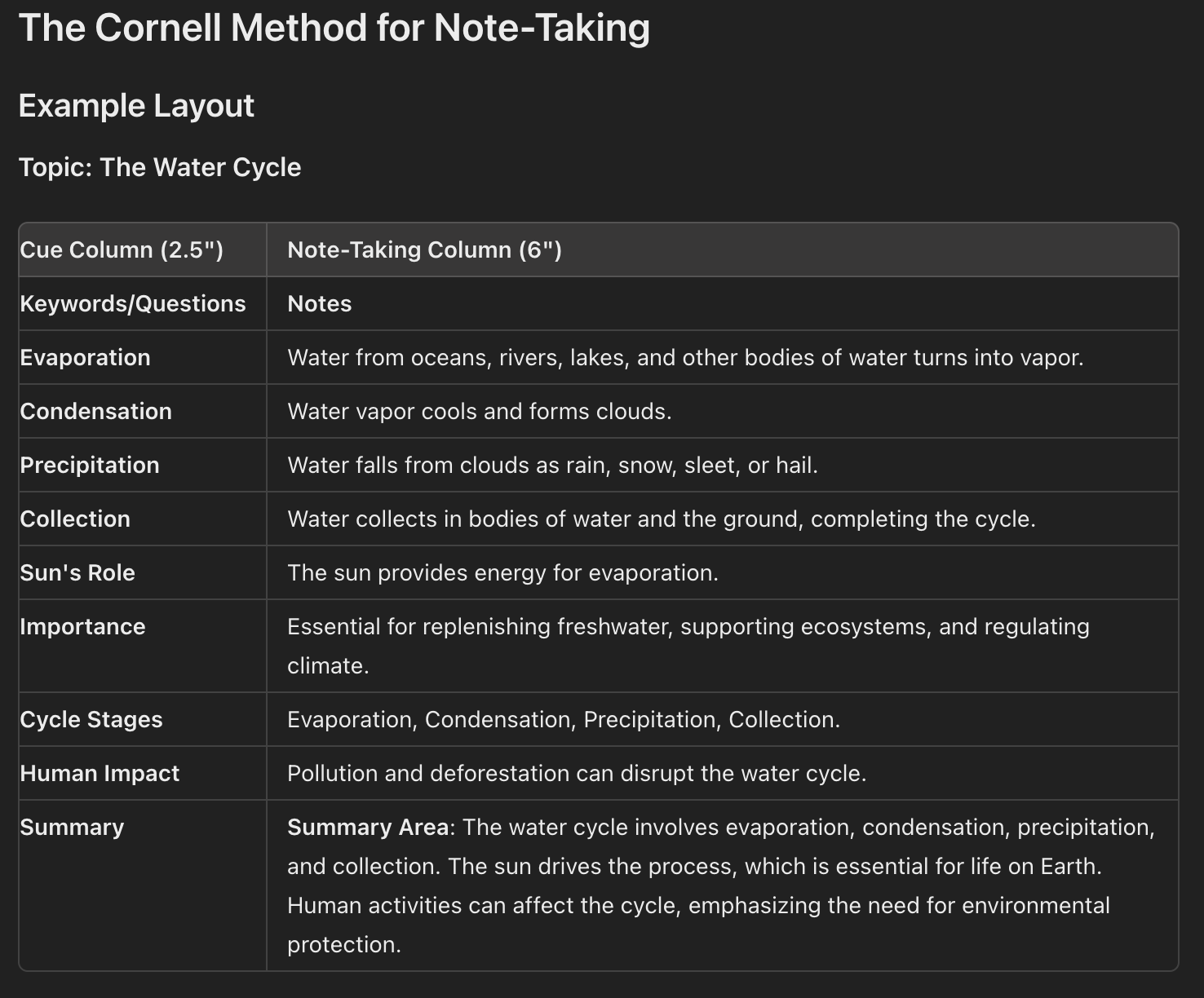
The Mapping Method: Visual Organization of Concepts
The Mapping Method turns your notes into a visual map. You start with the main concept in the center of your page. Then, branch out to other ideas connected to it. This method is like drawing a tree that grows from your central idea, with branches for different thoughts or concepts.
It’s great for subjects that have many related parts or topics.
Using this method helps you see connections between ideas quickly. For example, if you’re studying history, you can map out events, people, and places related to a key event at the center.
Visual learners find this approach especially useful because it makes complex information easier to understand and retain. Plus, creating these maps can be fun! You get to use colors and diagrams which makes studying feel less like work and more like an art project.
Example Layout
Topic: Healthy Eating
_______________
| |
| Healthy Eating|
|_______________|
|
__________________________|__________________________
| | |
___________ ________________ ______________
| Fruits | | Vegetables | | Proteins |
|-----------| |----------------| |--------------|
| - Apples | | - Carrots | | - Chicken |
| - Bananas | | - Spinach | | - Beans |
| - Oranges | | - Broccoli | | - Fish |
|___________| |________________| |______________|
| | |
____________ _________________ ______________
| Benefits | | Benefits | | Benefits |
|------------| |-----------------| |--------------|
| - Vitamins | | - Fiber | | - Muscle |
| - Antioxid.| | - Nutrients | | - Growth |
|____________| |_________________| |______________|
|
_______________
| Balanced Diet |
|---------------|
| - Energy |
| - Well-being |
| - Immunity |
|_______________|
Choosing the Right Note Taking Method for Revision
Finding the best way to take notes for revising depends on your learning style and what you’re studying. Check out more tips to get ahead!
Factors to consider based on learning style and subject matter
Your learning style plays a crucial role in picking the right note-taking method. Visual learners might thrive with the Mapping Method, as it allows them to organize concepts visually.
This approach can turn complex topics into understandable diagrams. On the other hand, if you’re someone who remembers information better through writing, then methods like Cornell Note-Taking or Outline might suit you well.
These approaches encourage you to write down information, which helps in retaining details and summarizing key points effectively.
Subject matter also influences your choice of note-taking strategy. For instance, subjects heavy on data and numbers call for methods that allow space for charts and graphs—like the Charting Method.
History or literature classes, filled with dates and narratives, may benefit from the Sentence Method where detail is important. Consider what you’re studying and how different methods could help organize information better.
Whether using digital notes or sticking to handwritten ones in an exercise book sized according to ISO 216 standards ensures your learning tools align with your study needs perfectly.
Conclusion: Enhancing Study Skills Through Appropriate Note Taking Methods for Revision
Picking the best way to take notes can boost your study skills big time. Each method – whether it’s the outline, Cornell, or mapping – has its own perks. Think about how you like to learn and what you’re studying.
This choice can make review times faster and help you catch all the important info. Flashcards, mind maps, or neatly divided pages turn into powerful tools in your hand. So go ahead, give these methods a shot, and see which one lifts your grades and confidence sky-high!
FAQs
1. What are some of the best note-taking methods for revision?
Effective note-taking methods range from the Cornell system to the Zettelkasten method, Boxing method, and more. These help you organize your notes, summarise key points, and quickly find what you’re looking for during study sessions.
2. How can I take full notes in class or a lecture?
To capture lots of information effectively, consider using an outline list or boxing method where you group related ideas. Remember to use different colored stationery for visual grouping and keep your handwriting clear.
3. Why is it recommended to write notes by hand instead of typing them out?
Writing handwritten notes helps with memory retention as it forces us not to mindlessly transcribe lectures but to understand what we need to remember before taking down information.
4. How can I make my note-taking more efficient?
Use templates like those provided by the Cornell Note-Taking System or create flashcards and note cards to revise later on. This way, you can quickly convert written pages into easy-to-review materials that save time during revision.
5. Are there any tools that could enhance my note-taking skills?
Yes! Tools such as rulers for making neat lines under headings or lasso tools for digital notes can be particularly useful in keeping everything organized…and don’t forget about different paper sizes that suit your level of detail!
6.What’s a good way to review my notes after class?
After each lecture or meeting, go through your notes again – this will ensure that you’ve understood everything correctly…Try asking yourself questions based on these notes; it’s also a popular way of self-testing!
